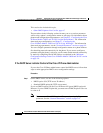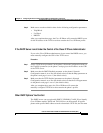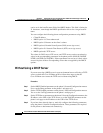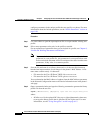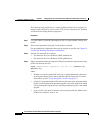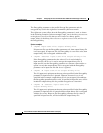
6-13
Cisco IP Phone Models 7905G and 7912G Administrator Guide (SIP)
OL-4277-01
Chapter 6 Configuring the Cisco IP Phone Models 7905G and 7912G Using a TFTP Server
Creating or Updating a Profile
• pTagFile is an optional path and file name (or file name only) of the parameter
tag file. Use this option if the parameter tag file is not in the folder from which
you are running the cfgfmt.exe tool, and if the parameter tag file is not named
ptag.dat.
• input-text-file is the name of the text version of the profile file. Make sure to
include any extension, such as .txt.
• output-binary-file is the name of the binary file that the Cisco IP Phone uses
as the TFTP configuration profile file. Specify the file name as follows, as
follows, where each xx is the two-digit lowercase hexadecimal representation
of each integer in the phone’s MAC address. The file name must contain
exactly 14 characters.
–
File name for the Cisco IP Phone 7905G: ldxxxxxxxxxxxx
–
File name for the Cisco IP Phone 7912G: gkxxxxxxxxxxxx
Step 5 Put the binary file in the root directory on the TFTP server
When the Cisco IP Phone powers up or refreshes, it will retrieve its unique
configuration file from the TFTP server.
If you want to refresh the phone immediately, see the “Refreshing or Resetting the
Cisco IP Phone” section on page 6-17.) If you do not perform a refresh procedure,
the phone will update its configuration the next time it contacts the TFTP server.
Related Topics
• Creating a Default Profile, page 6-13
• Using Encryption, page 6-15
• Refreshing or Resetting the Cisco IP Phone, page 6-17
Creating a Default Profile
You can create a default profile, called lddefault.cfg for the Cisco IP Phone 7905G, or
gkdefault.cfg for the Cisco IP Phone 7912G, that is common to all Cisco IP Phones
of the same model. This profile is applied to a phone only if a phone-specific profile
(ldxxxxxxxxxxxx or gkxxxxxxxxxxxx) does not exist for the phone on the TFTP server
when the phone powers up.




